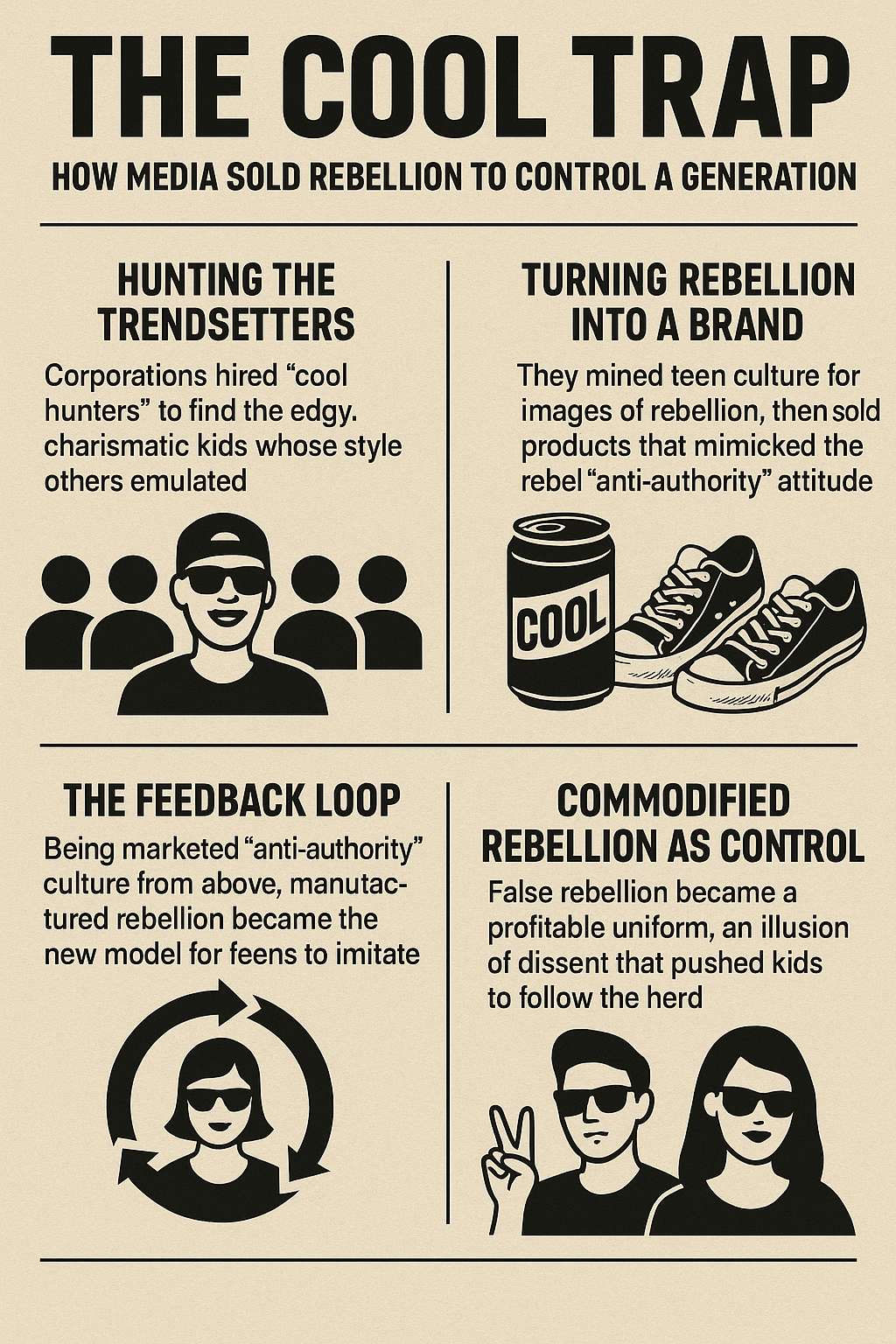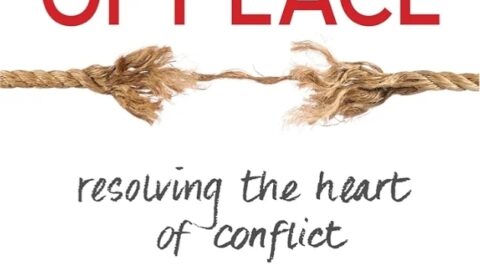Introduction
In the early 2000s, The Merchants of Cool documentary offered a searing look at how corporations manipulate youth culture—not by resisting rebellion, but by owning it. Today, the insights remain eerily prescient.
We are not merely witnessing teenagers being sold soda, sneakers, or cell phones—we are watching their identities, values, and even dissent being monetized by a media-industrial complex that knows exactly what it’s doing. This is not accidental. This is design.
Below are 16 vital truths that expose the depth of the deception.
1. The Corporate Infiltration of Youth Culture
Massive corporations—Viacom, Time Warner, Disney—control nearly all media targeted at youth. They conduct intensive studies on teen behavior to manipulate desire and engineer identity through entertainment and advertising.
2. Teens as the Hunted Class
Young people are not passive consumers; they are a market to be hunted. “Cool hunters” are sent to observe teens, extract new trends, and mine their psychology to sell it back in polished, profitable form.
3. The Feedback Loop
Teens create something original → Corporations observe and copy → Market it back to teens as “authentic” → Teens adopt it again. This loop kills authenticity, creating a synthetic culture of self-reinforcing imitation.
4. The ‘Mook’ and the ‘Midriff’
MTV and similar platforms created archetypes that flattened teen identity:
- The Mook: Loud, crude, immature frat-boy masculinity
- The Midriff: Hypersexualized, appearance-obsessed young female
These weren’t discovered—they were manufactured to serve ad-driven entertainment.
5. The Death of Real Rebellion
Genuine rebellion resists systemic power. But corporations have learned to pre-package rebellion—strip it of danger, market it as “edgy,” and sell it back to the masses, rendering it safe and profitable.
6. Commodified Identity
Youth are taught to “express themselves” through consumerism. Who you are becomes indistinguishable from what you buy. Identity is reduced to a brand strategy.
7. Culture of Consumption
From school halls to social media, kids are raised to believe that meaning, self-worth, and happiness come from consumption. Insecurity is the fuel. Buying is the solution.
8. Customers, Not Citizens
Rather than being taught virtue, resilience, or civic responsibility, teens are conditioned to become predictable consumers. Entertainment pacifies, distracts, and emotionally dulls them to deeper purpose.
9. Sexualization as Strategy
The earlier a girl is sexualized, the more profitable she becomes as a consumer. Advertisers deliberately target insecurities and desires to ensure brand loyalty rooted in self-image.
10. Rebellion Becomes Control
By owning the message of rebellion, corporations domesticate dissent. The rage is real, but it is funneled into pre-approved, monetized expressions—never toward systems of actual power.
11. Blurring of Culture and Commerce
Teens don’t just consume media—they live in it. When all art, music, fashion, and social dialogue are corporatized, real culture is indistinguishable from advertising.
12. Emotional Pain as Profit
Teenagers are deeply vulnerable—and that vulnerability is exploited. Depression, anger, identity crises—these emotions are studied, mined, and used as psychological leverage to sell products.
13. Early Surveillance State
Before Instagram’s algorithm or TikTok’s For You page, corporations were already studying behavior through focus groups, channel programming, and media feedback. Today, it’s just more efficient.
14. The ‘Cool’ Costume of Control
“Cool” no longer threatens the system—it serves it. Every act of “resistance” becomes a costume change within the system, not an escape from it. Rage, sexuality, and attitude are monetized.
15. The Cult of Edginess
Being “edgy” is now a virtue—but only when it’s on-brand. Real risk, real introspection, or truth-telling are filtered out. Instead, controlled chaos becomes the new aesthetic of control.
16. Silencing the Deep Soul
Values like humility, discipline, reverence, and emotional depth are drowned out by a media environment that thrives on instant gratification, spectacle, and superficiality.
Conclusion: Rebellion Was Hijacked
The Merchants of Cool didn’t just reveal a marketing trend—it exposed a cultural hijacking.
What looks like youth culture is often an elaborate sales pitch. What feels like identity is often corporate scripting. And what feels like rebellion is often a trap designed to pacify.
To break the cycle, we must:
- Teach media literacy
- Encourage emotional self-awareness
- Cultivate spiritual and philosophical identity beyond brand
- Unplug from systems that reduce human beings to consumers
Only then can we restore rebellion as something real, sacred, and liberating.







